Youth Day Marked in Kumrovec
ZAGREB, 22 May 2021 - Delegations of Krapina-Zagorje County, the town of Kumrovec, associations honouring Josip Broz Tito and the Alliance of Antifascist Fighters and Antifascists (SABA) on Saturday marked Youth Day by laying wreaths and lighting candles at a monument to Josip Broz Tito in his birthplace Kumrovec.
SABA leader Franjo Habulin said that this year, due to the coronavirus epidemic, people gathered in Kumrovec spontaneously to remember Youth Day as it had been and to agree on how it should be marked in the future.
"Youth Day is inextricably linked with Josip Broz Tito because it is marked on the day when Tito's birthday was officially celebrated and because Tito had a special relationship with young people, who had borne the brunt of the national liberation struggle in World War II as well as the burden of the post-war reconstruction of the country," Habulin said.
He added that the attitude to young people today was not as it should be, which was why they were looking for a future outside of Croatia, stressing that the current as well as future governments had the responsibility to create conditions for young people to stay in the country.
Jovan Vejnović, president of the alliance of associations honouring the Yugoslav communist revolutionary and statesman, said that it was frequently forgotten that in Tito's time the then Yugoslavia had changed from a backward country with a large share of illiterate people to "a serious European state."
"Before WWII 80% of Yugoslavia's population was illiterate and over a period of 25 years they were all made literate, we educated a cultural and technical intelligentsia that was on a par with intellectuals in the rest of Europe. That is something that made not only Tito's status as a leader of the Non-Aligned Movement important for this region, it made the country he represented important as well," said Vejnović.
For more news about events in Croatia, follow TCN's dedicated page.
Croatian President Zoran Milanović: "Serbia's Attempt to Equate Draža Mihailović With Tito Pathetic"
ZAGREB, 12 May, 2021 - Croatian President Zoran Milanović said on Tuesday that attempts to equate Serbian Chetnik leader Draža Mihailović with the anti-Fascist leader Josip Broz Tito were pathetic.
During World War II Draza Mihailovic led the Chetnik movement whose members were Nazi collaborators and were held responsible for mass-scale war atrocities against non-Serbs in Serbia, Bosnia and Herzegovina, Croatia, Montenegro and some other parts of the then Yugoslavia.
On Victory Day observed on 9 May, during a ceremony held in the National Theatre in Belgrade, two big pictures of Mihailović and Tito were displayed one by another on a video-wall, according to local media outlets. In attendance at that ceremony were Serbia's top officials including President Aleksandar Vučić.
This prompted the Croatian president to say today that Mihailović and Josip Broz Tito, who led the Partisan forces in that war, could not be equated.
"Mihailović was a mere fool. He was not the same as Ante Pavelić (the Fascist leader in Croatia during the Second World War), he was an opportunist and eventually war criminal," Milanović told the press in Zagreb.
As for Mihailović being posthumously decorated by U.S. President Harry Truman, Milanović said that the decoration had been awarded for the operation of rescuing 300 downed Allied airmen. "This is as if you were robbing a bank and then buying to someone a meat pie, pretending to have a big heart," said Milanović.
He went on to say that Chetniks were known for, atrocities, opportunism and cowardice and that they had faced the strongest resistance from Serbs, Montenegrins and Dalmatian Croatians.
He also accused Serbia's authorities of indoctrinating children and young people.
"Unfortunately, everything is delusion there in our neighbours," said Milanović, elaborating that a majority of the Croatians stayed at home during World War Two. "Being Home Guardsman (Domobran) is not at all a crime. It is o.k.," he said adding that a lot of fighters from the Croatian nation joined the Partisan troops, and only a small portion fought for the Axis powers and the (Pavelić-led) Ustasha movement.
For more about history in Croatia, follow TCN's dedicated page.
Best Zagreb Mayor By Historians: Historians Shouldn't Rate, But Većeslav Holjevac Takes Lead
May 11, 2021 - Ahead of the local elections, following the death of Milan Bandić and troubling issues Zagreb is facing at the moment, TCN reporter Ivor Kruljac wondered who is the best Zagreb mayor by historians.
With the local elections happening in Croatia this Sunday, just as every year, 2021 is no exception, with all eyes directed on Zagreb. This is no surprise, given that, for better or worse, Zagreb is the capital city, the center of politics, culture, science, education, and the spot where Croatians from other smaller towns, villages, etc. come in search of a job and new opportunities. You may not necessarily need to leave the country to leave your dreams, and despite other regions of Croatia slowly but surely developing, Zagreb is still considered by many as the necessary place to go to achieve something.
And this year, the eyes are even watching in even bigger suspense; Milan Bandić, who was the first man of the city for 20 years, passed away in February. The ever-controversial political figure (now replaced by his deputy Jelena Pavičić Vukićević, who also runs in the elections) suspected of corruption, being arrested during his mandate and on several trials, left lots of unresolved issues which the new mayor will have to address in the city's administration. Additionally, the current corona crisis caused some new challenges, and last year's earthquakes and city reconstructions are still a hot political topic among citizens.
Zagreb: History of overcoming the crisis
Challenging circumstances in 2021, no doubt, but certainly nothing Zagreb isn't used to. While settlements on the city's territory date earlier, the first mentions of Zagreb are linked with establishing of Capitol Diocese in 1094. Since then, diseases, earthquakes, floods various wars (WW1 and WW11 included, as well as the 90s war Croatians commonly refer to as the Homeland War), disrupt the peaceful life of Zagreb citizens. The city still stands. But of course, these different troubling contexts were handled not just by citizen's persistence but also by the city's authorities and leaders.
Throughout the turbulent history, Zagreb had, concluding with current deputy Jelena Pavičić Vukičević, a total of 53 mayors. The first one was as, Povijest.hr writes, Janko Kamauf, whose term lasted six years, from May 15, 1851, to 1857. He was a former city judge of Gradec, a title whose authorities basically made him the mayor of Gradec. Following the unification of rival Gradec and Kaptol into one city in 1850, he was elected to be the first leader of a city whose population at the time counted 16,036 people.
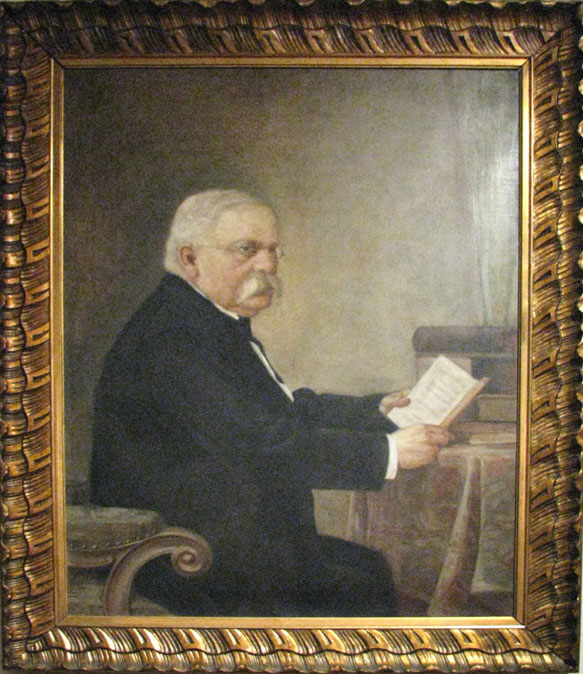
Janko Kamauf painted by Bela Čikoš Sesija, showcased in Zagreb City Museum © Unkown author, Wikipedia
He was the first, but was he the best?
I asked several historians if could they rate and pronounce in their opinion, with regards to the specific contexts, who was the best Zagreb mayor, from Kamauf to Vukičević Pavičić.
Two votes for Većeslav Holjevac!
„I'm not into grading, that's not a historian's task. Our task is to explain and put on the table facts and context of events“, said Ivo Goldstein when I asked him about the best mayor of Zagreb.
Ivo Goldstein may be best known to the Croatian public as a harsh critic of the far-right and the fascist regime of the Independent State of Croatia. As a Historian, he took an interest in various topics related to Croatian history.
At the start of his career, his focus was on Byzantine Empire and Croatian Middle Age History as well as the history of Jews in Croatia. In mid 90's he moved to the various aspects of Croatian history in the 20th century.
He was a professor of various history courses „General History of the Middle Age“ (1984-2003), history of methodology (1991-1996), and many more and today a full-time professor at the Department of History on The Faculty of Humanities and Social Sciences, the University of Zagreb (where he mastered and later completed his Ph.D. thesis at the Faculty of Humanities and Social Sciences, University of Belgrade).
Goldstein's scientific papers received positive acclaim in various countries worldwide, he hosted various projects scientific projects and associations and is very active in Croatian public space when it comes to historical issues that shape the ideas and decisions of current policies in Croatia.
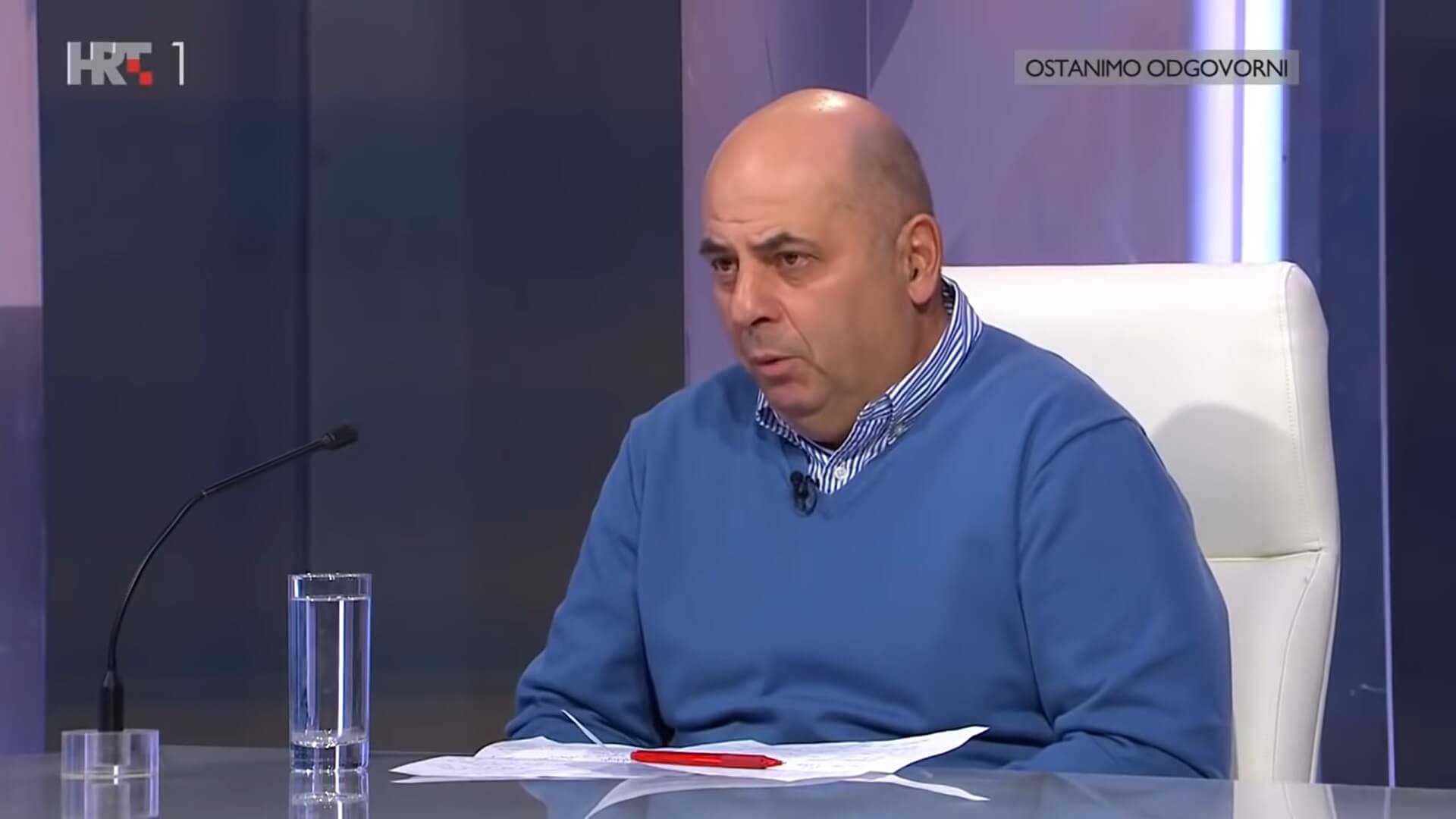 Ivo Goldstein / screenshot HRT Nedjeljom u 2
Ivo Goldstein / screenshot HRT Nedjeljom u 2
Upon explaining the role of historians, professor Goldstein nevertheless didn't mind giving his personal opinion.
„For me, there is no doubt that the best mayor of Zagreb is Većeslav Holjevac“, said Goldstein.
Većeslav Holjevac was the Mayor of Zagreb from 1952-1963 and his eleven-year mandate saw Zagreb develop and spread as the city.
„At that time, Zagreb was the capital city of Socialist Republic of Croatia, which was part of Yugoslavia. Holjevac saw a boost by liberal politics, it was the time of growth and optimism and Holjevac knew how to use it. He was a man of action and used Yugoslavia's opening to the world to Zagreb's benefit“, explained Goldstein.
He added that Holjevac didn't want to be perceived as some sort of transmission of higher state authorities. He didn't hide behind forums and was an independent, free-minded politician, which made him known and beloved among citizens.
„But it made him unloved among the higher power of authority which ended his mandate, although we historically don't know the real reason why Holjevac stopped being mayor“, Goldstein pointed out the mystery which is yet to be cleared up by historians.
The key term of Holjevac's mandate is the General Urban Plan which saw the development of the Most Slobode (Bridge of Freedom), expansion of Zagreb city to south across Sava river, and what today is Novi Zagreb (New Zagreb), as well as building up Zagreb Airport.
„Holjevac knew how to surround himself with good associates who were both dreamers and experts. Holjevac also engaged himself in the projects and his associates felt safe and that he got their back“, explained Goldstein.
The best example of that boldness and visionary approach can be seen in the Zagreb fair which was at that time located at the place of today's Student Centre in Savska.
„The fair needed expansion but was surrounded by railroad tracks everywhere, and the question was how to expand it. There were several options, but Holjevac decided to take it across the Sava river, and it happened. It was quickly constructed, and the first fair on newly build location was the Autumn fair in 1956. and it was the biggest event of its kind in the world back then“, said Goldstein, gladly adding he even had a chance to meet Holjevac as a 12-year-old since the mayor knew his father, an established Croatian intellectual, and politician, Slavko Goldstein.
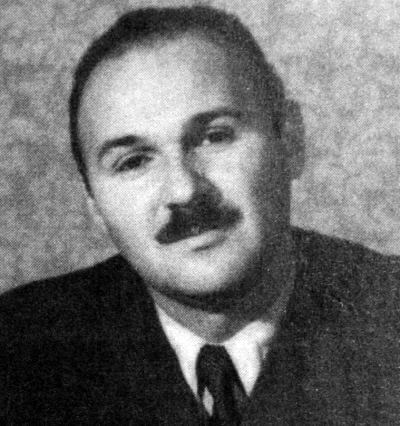
Većeslav Holjevac © Udruga Kameleon / Wikipedia
Hrvoje Klasić was professionally most occupied by Većeslav Holjevac, so he also shares Goldstein's opinion about Većeslav Holjevac.
„In a sentence: Zagreb has never been more developed as it was after Holjevac“, summarized Klasić.
Hrvoje Klasić graduated in 1997 from the Department of History, Faculty of Humanities and Social Sciences at the University of Zagreb. At the same University, he defended his dissertation entitled “1968 in Yugoslavia. Socio-economic changes in an international context”. Since 2003 he has been employed as a professor at the same Faculty and University.
Today, he holds a number of courses related to the world and national history of the 20th century.
Hrvoje Klasić also won the Annual Award of the Association of University Teachers and other Scholars in Zagreb in 2006. That same year he won the Annual Award of Sisak City for the Book „Croatian Spring in Sisak”. He is the author of 3 more books and the author of two documentary series „Croatian Spring“, and “The Independent State of Croatia” produced by Croatian Television. In 2017 The Serb National Council in Croatia gave him an award for the improvement of Croatian-Serbian relations. In 2019 he won the Award for the promotion of peacebuilding, nonviolence, and human rights.

Hrvoje klasić © Hrvoje Klasić
„Most people don't know that Holjevac technically wasn't a mayor, rather he was a president of the City's National Council“, explained Klasić the precision of the functions in the previous Yugoslavian state. He added that while his term lasted from 1952-1963, that is only partially true because he was first appointed to lead Zagreb in 1945.
„In 1945, he was named the city commander who was a military function but he was also in charge of food, traffic, working with several refugees after World War 2 until he gave the control over to civilian bodies“, describes Klasić.
Holjevac then moved on to be the minister of work and traffic in the Social Federal Republic of Croatia. However, at that time, Yugoslavia was going under a change in its political institutions by the self-governing policy which went under parole „factories to workers, cities to citizens“, and as a result, Holjevac 's ministry was shut down. His return to the top position in Zagreb happened without him even knowing.
„As part of self-governing, the Communist Party in Zagreb searched for someone who isn't just going to execute orders from above but instead is an individual that has quality, creativity and will make its own decisions. Holjevac was elected during a meeting he wasn't even present on, and some members of the party were worried is it smart to give Zagreb to a person who is from Karlovac“, said Klasić.
As Goldstein already mentioned, his term lasted over a decade, and Klasić adds that was a very unusual duration at the time.
While Goldstein already mentioned the traffic connections of Zagreb, Klasić said it is very hard to count everything Holjevac built, but he put focus on the industry. Industrial plants of organic-chemical industry, Zagreb heating plant, industrial plants of Pliva pharmaceuticals, Chromos paint company, Kemika, Zvijezda company, Katran, Badel company for alcohol spirits, an ice rink on Šalata, winter pool and gymnastics gyms on Mladost, Yugoton record company, Jadran Film, TV tower on Sljeme, Zagreb drama theatre, an emergency room in Draškovićeva, various elementary and high-schools, and began construction of Vatroslav Lisinski concert hall and more.
„Before Holjevac, there were 40,000 workers in Zagreb. After Holjevac, there was 110,000“, said Klasnić to illustrate the results which made the city the strongest industrial center in Yugoslavia. Apart from industry, Holjevac put a lot of focus on culture and education, as evident by building Workers University Moša Pijade for adult education (today's Public Open University Zagreb) and culture.
Holjevac's „Jump over Sava“ was done on the one hand to prevent interventions in old Zagreb, and on the other, the organizational construction of Novi (New) Zagreb saw the workers live close to the newly built factories.
As Goldstein already referred to Zagreb Fair as perhaps the most significant project of Holjevac's mandate, Klasić added that the unique geopolitical position of Yugoslavia as the bridge between east and west, thanks to the non-aligned movement, made the fair a key place worldwide.
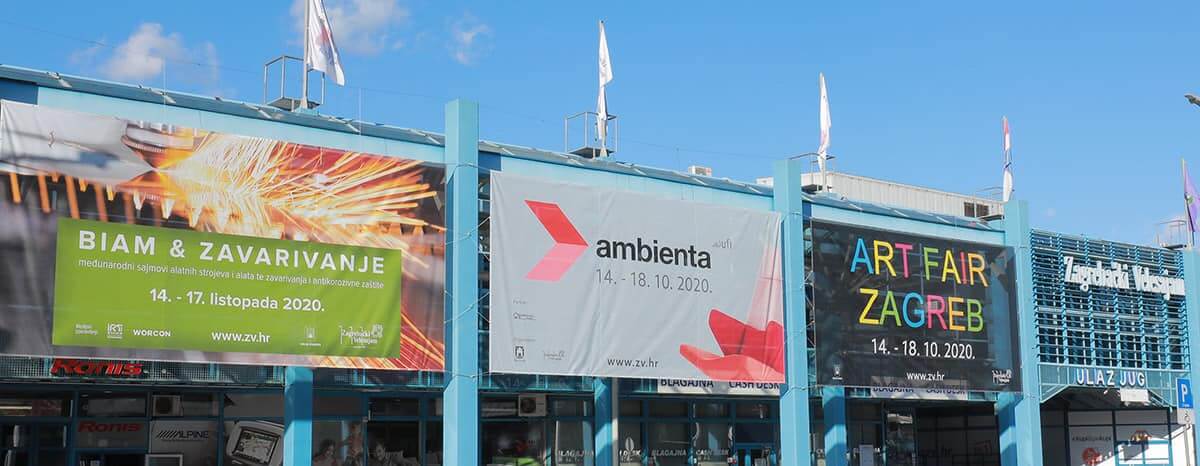
Southern entrance of Zagreb Fair in 2020 © Zagrebački Velesajam
„The fair was not just important for holding exhibitions, but for making deals and signing contracts as well. Given Belgrade was the capital of Yugoslavia, there were pressures to have such a fair there, and there were even boycotts from Belgrade to Zagreba Fair events. However, Holejvac being both persistent and enjoying support by the Yugoslavian president Marshall Josip Broz Tito, managed to keep this significant place in Zagreb“, explained Klasić.
When asked about resentment of other politicians, and the unclear mystery of concluding his mandate, Klasić said he had a chance to look at archives about Holjevac while working on an exhibition about him, and he feels that the situation is much simpler.
„Holjevac basically left due to the same politics that got him to be the mayor in the first place. The Self-Governing model started descending to the lower levels of the system and started searching for creative people. In 1963, a new constitution was brought that further developed the political system to give City Assembly more power accenting the community governing Zagreb. Holjevac's president of City's National Council title has shut down, and the president of Assembly became the first man of Zagreb.
Rotation of politicians as well as limited mandate time was arranged too“, explained Klasić.
He added, however, that it is problematic that an experienced, capable, brave, and brilliant man like Holjevac wasn't put to better use after he stopped being mayor and played bigger roles in Yugoslavian political life.
There isn't the best, only good and bad mayors
Unfortunately, other historians, I contacted (and of course, I couldn't contact every single one, who knows who else might be interested to participate), didn't respond to my inquiry. While Ivo Goldstein explained rating mayors isn't historian's job, Stevo Đurašković, professor at the Faculty of Political Sciences in Zagreb, further elaborated the problem of my question.
„I'm not a fan of such an approach to the topic like it's a miss pageant. In Zagreb's history (as in good portions of cities around the world). There were several great mayors, again, each in its own historical context“, explained Đurašković.
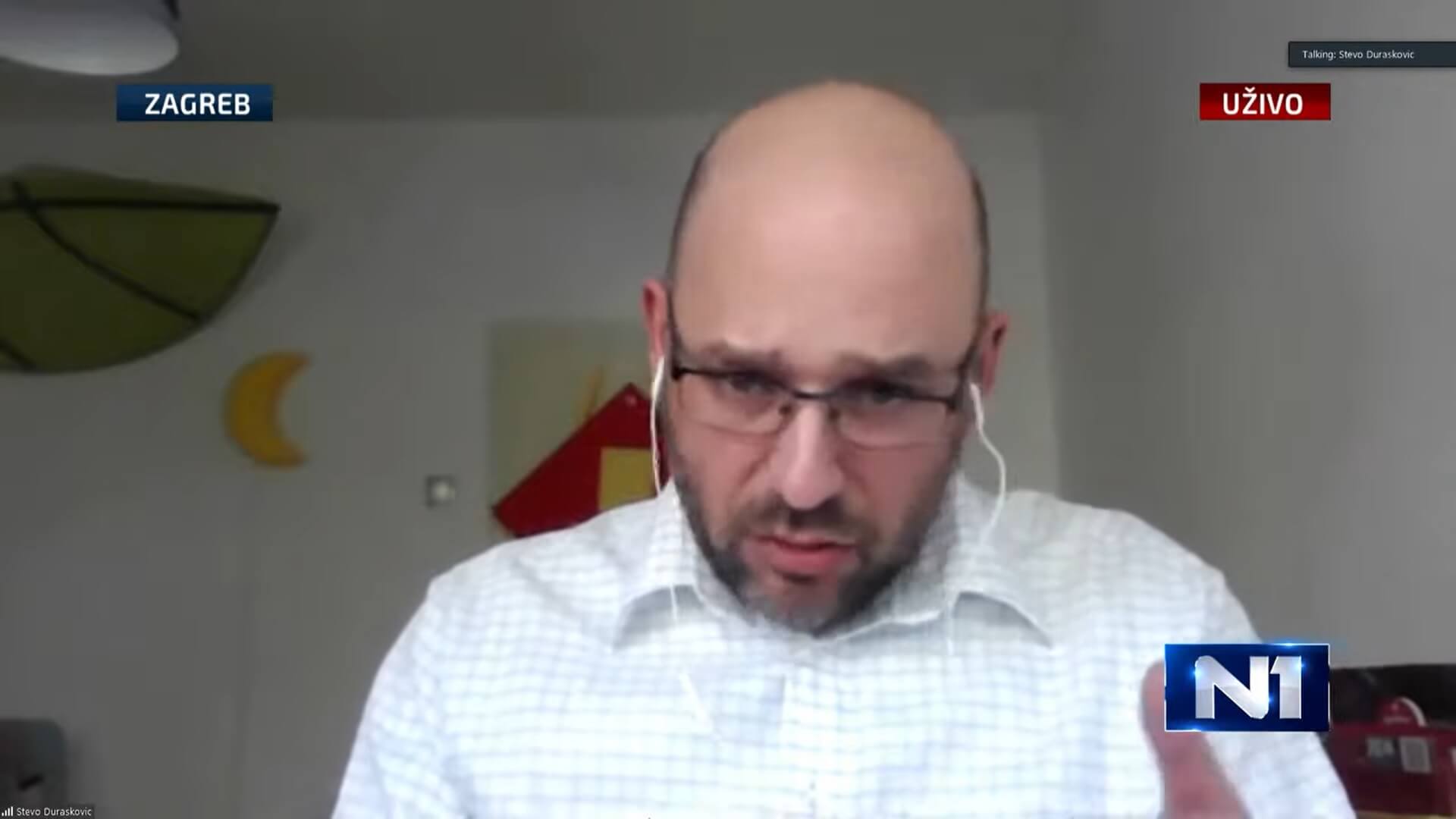
Stevo Đurašković, screenshot / N1
Stevo Đurašković is an Assistant professor at the Faculty of Political Sciences, University of Zagreb, where he teaches courses in politics of history and Croatian history. He received his Ph.D. in Political Science from the Faculty of Social Sciences at the University of Ljubljana and his MA in Central European History from the History Department at the Central European University, Budapest. His research interests include the politics of history, intellectual history, and national identity-building processes in East-Central and Southeastern Europe. Recently he published the book The Politics of History in Croatia and Slovakia in the 1990s (2016). Participated in several international projects, including “Identity Reader: Regional Identity Discourses in Central and Southeast Europe, 1775-1945” (CAS, Sofia). He is a member of the editorial board of the Cultures of History Forum (Imre Kertész Kolleg, University of Jena). In 2009/2010. He was a Ph.D. research fellow at the Faculty of Economic and Social Sciences, Comenius University, Bratislava (CEEPUS grant, Visegrad Fund grant).
In other words, an expert in his respective field with a valid and knowledgeable opinion.
„Milan Amruš and Većeslav Holjevac were great mayors. How to determine if Amruš's development of pre-war Zagreb is greater than Holjevac's post-war development of Zagreb?“ concluded Đurašković his decline to comment who would be the best mayor of Zagreb.
Speaking of Amruš, he was Zagreb mayor in two separate mandates, the first one lasting from 1890 to 1892 and the second from 1904 to 1910. Lice Grada reports that some of the accomplishments in Maruš terms include electrification of the city, and building up Munjara Power Plant (in 1906 and 1907). Under Amruš's mandate, the website continues, horse trams were replaced by electric trams in 1909 and new tram lines and the expansion of the previous one from Ilica to Topnička Barracks were constructed. In addition, 1890 saw lower and upper Zagreb connected by a funicular.
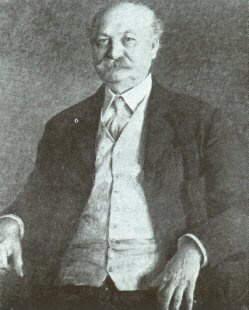
Milan Amruš © Unknown author Wikipedia
Đurašković also added in his decline that Pero Pirker is often „a forgotten mayor“, and Klasić mentioned him as the Holjevac's successor. Mentions of Pirker are also noted on Nacionalne Manjine (National Minorities) site that declared Pirker as a noted Zagreb mayor.
"There is no doubt that Pirker is one of the most capable, most successful, and in its time an extremely popular mayor. But it is stunning that for political reason, considering he was one of the established champions of Croatian Spring in 1972, his work was completely silenced not only until the 1990s but also later“, wrote Goran Beus Richembergh for Nacionalne Manjine.
It's worth noting that the Croatian Spring was a reawakening of national identity which paved the way for the country's independence and the dissolution of Yugoslavia, on which TCN reported on its 50th anniversary earlier this year.
In Pirker's time, the Great flood that sank Zagreb in 1964 was truly the historical challenge of his mandate.
„It was a natural disaster of great extent, and the entire previous state (Yugoslavia) was involved in sanitation and help was arriving from all over the world. But, the biggest responsibility for the coordination of help, sanitation of the damage, taking care of the casualties, and building new homes was carried out by Zagreb's authorities, lead by Pirker who showed to be a skillful manager and successful in various projects“, described Beus Richembergh.
Amruš had the challenge to electrify Zagreb to keep up with other European capitals, Holjevac had the challenge of restoring and developing the city post WW2, and Pirker had the flood.
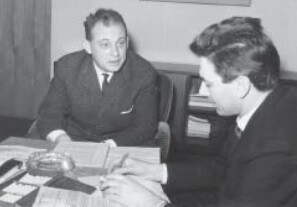
Pero Pirker (on the left) © Croatian Journalist Association / Wikipedia
Both corona and earthquake, as well as the mess suspected to find post-Bandić, are all just another challenge in the history of a town that is used to be challenged and always dancing victory laps.
While Đurašković explained comparisons of what was the most difficult challenge and who was the best mayor make no sense, Goldstein and Klasnić presented their pick. But, as respectable historians they are, they emphasized that it is their opinion and not an empirical fact, even though their arguments are both knowledgable and well explained.
In the end, politics should be about making people's lives better and not about chasing crowns or historical acknowledgments. And as Zagreb really needs a quality leader, the only logical conclusion is: may the best candidate wins, and may purgers recognize the best man or women for Zagreb to once again wave the middle finger to the aftermaths of the recent crisis as it overcomes them.
Learn more about Zagreb on our TC page.
For more about history in Croatia, follow TCN's dedicated page.
Highlights of the Week: 5 Big Events in Croatia from May 3-9, 2021
May 7, 2021 - TCN's regular retrospect of Highlights of the week, through the selection of TCN's reporter Ivor Kruljac.
President Milanović loved by locals in Plaški. Firefighters quickly reacted to the fire in Zagreb recycle yard. Pula celebrated its liberation while Šibenik received new doses of coronavirus vaccines. Dinamo and Hajduk end their match in a tie. Overall another interesting week in Croatia, and here are more details on all highlights.
Highlights of the week: President Milanović loved in Plaški county
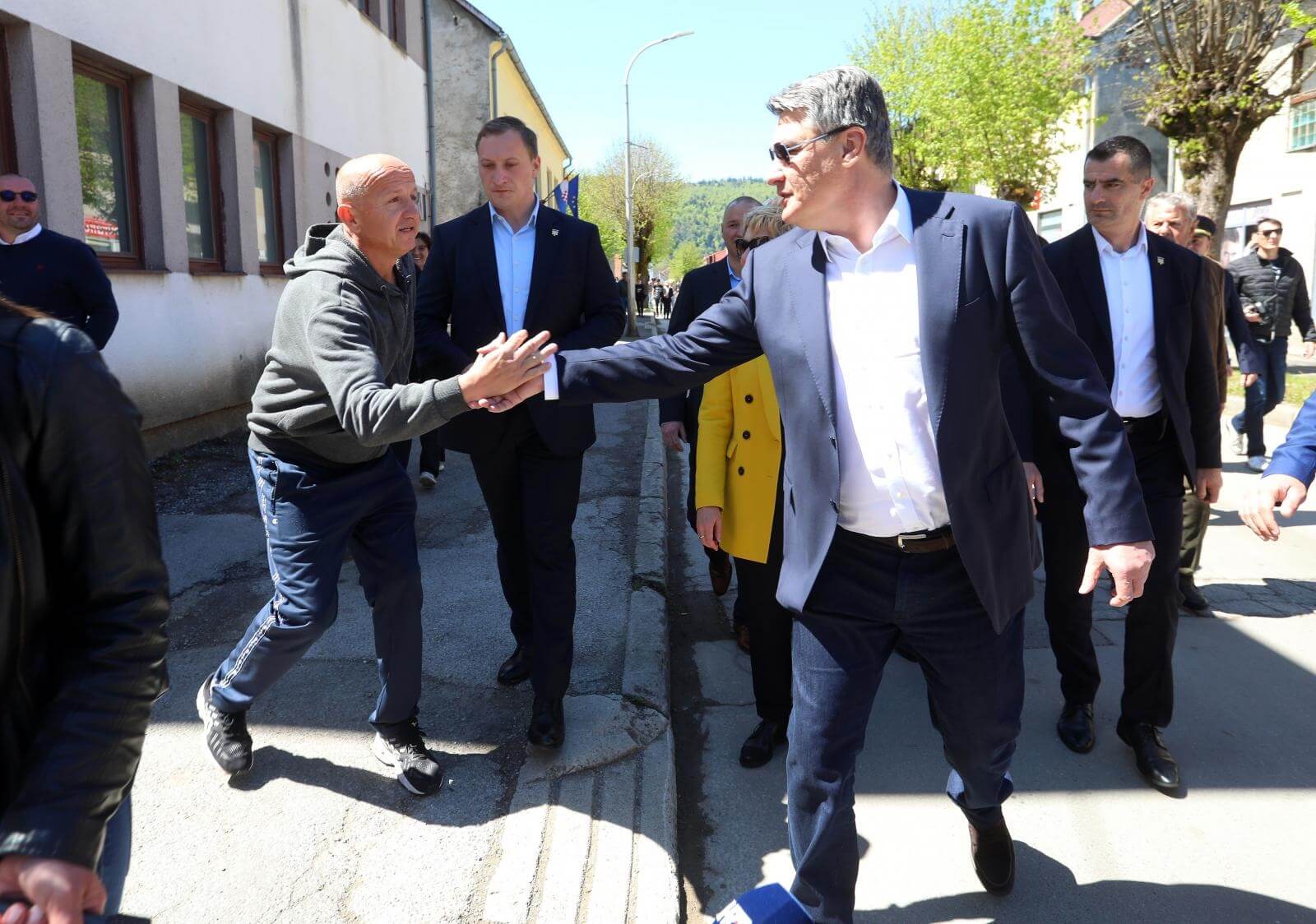
© Kristina Stedul Fabac/ PIXSELL
Croatian president Zoran Milanović visited Plaški county near Ogulin on Tuesday to visit the newly-build Firefighter's home and Plaški Culture Home. The locals welcomed president Milanović with ovations, and many use the opportunity to handshake and take a photo with the president. As Večernji List reports, Milanović took the visit as an opportunity to comment on the hate speech incident at Borovo Selo. He stated that the President of Serbian National Council Milorad Pupovac and Croatian Prime Minister „should use the police, but they don't, they are causing incidents.
Highlights of the Week: Pula celebrating its liberation in WW2
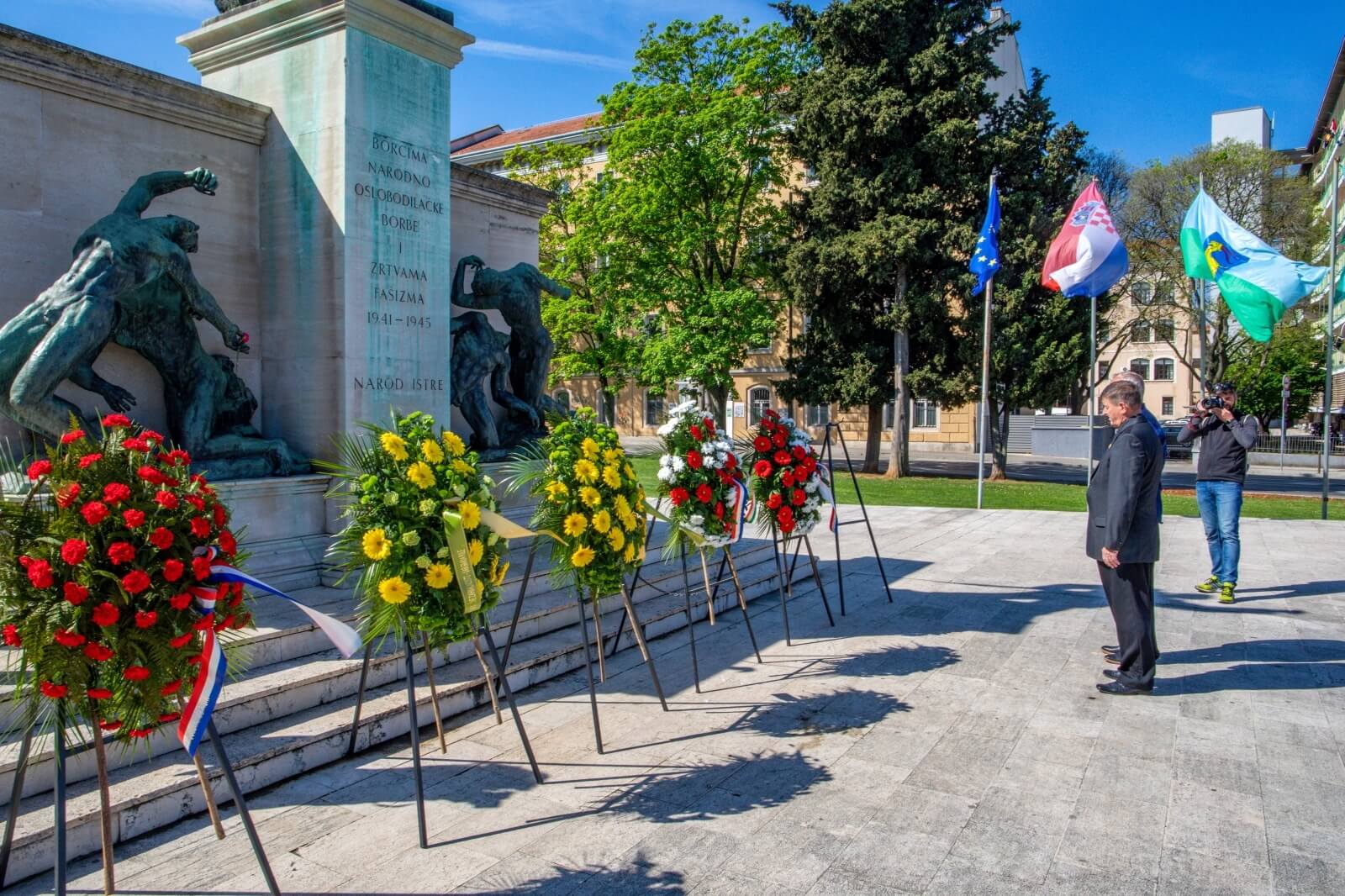
© Srecko Niketic/ PIXSELL
Pula celebrated its annual liberation day and the Pula City Day, marked on May 5. In Tito's park, the traditional commemoration to the fallen WW2 soldiers of Tito's partisan army saw Tiziano Sošić (president of Pula City Council), Elena Puh Belci (vice mayor of Pula), Aleksandar Matić (chief of the City of Pula Office) and Fabrizio Radin (vice-county ruler of Istria county) paid their respects. Representatives of associations of anti-fascist fighters and anti-fascist of the city of Pula were present too.
Highlights of the Week: Dinamo and Hajduk end with an even score 1:1
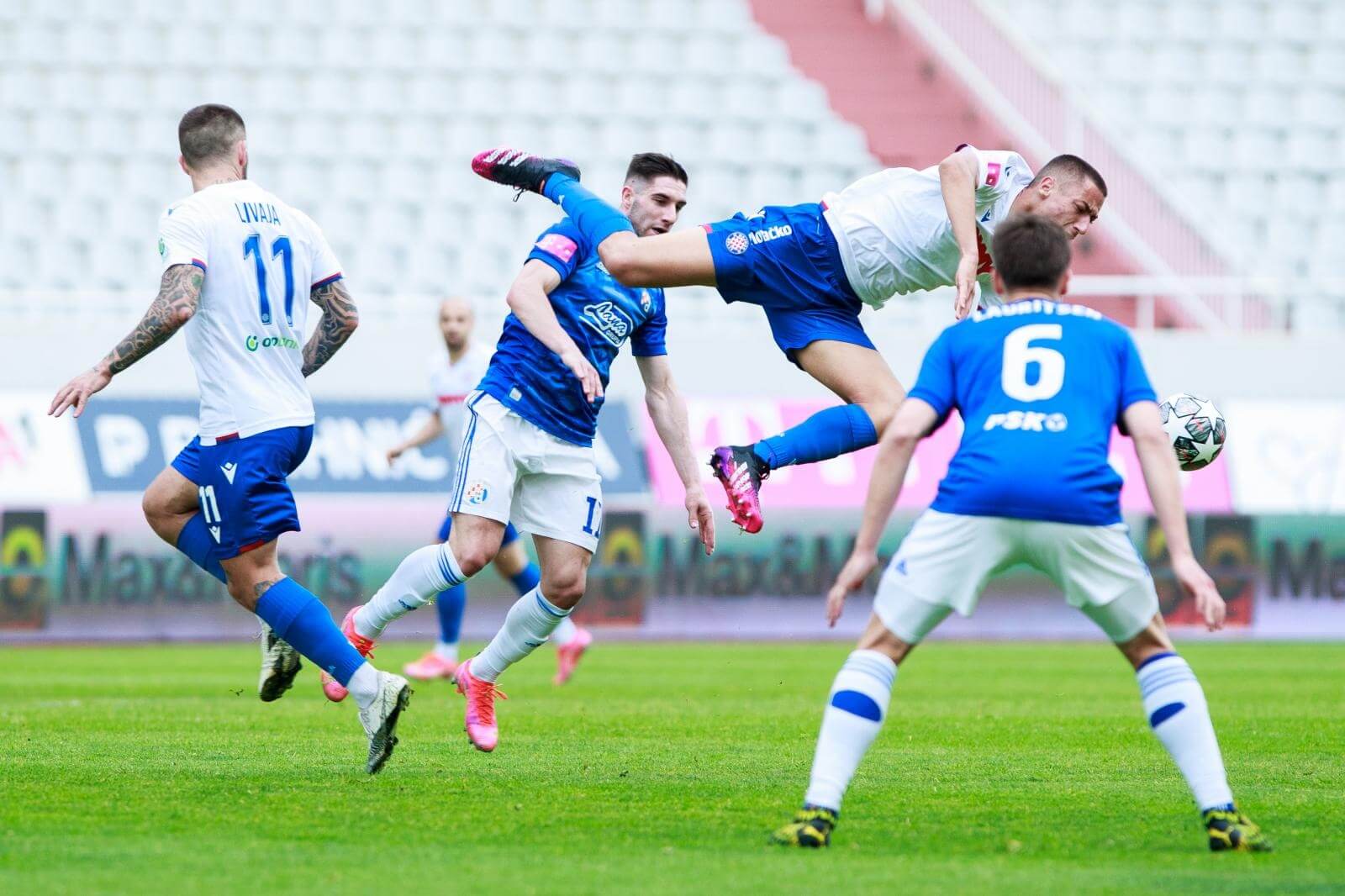
© Milan Sabic/ PIXSELL
Hajduk and Dinamo's eternal opponents played another game at Hajduk's home of Poljud Stadium in Split on Wednesday. The match was the 22nd round in Croatian First League, and fans couldn't wait for it as the game was postponed.
Hajduk opened the match well and had a chance to take the lead in the first 20 seconds. Kačaniklić received an excellent long ball and ran on the right side. He rushed into the penalty area and shot diagonally, but Livaković came out and closed his corner. Dinamo improved and took the lead in the 16th minute with a goal by Majer, and Livaja returned the favor in the 44th minute. Diamantakos hit the crossbar in the final minutes of the match but without success.
After three victories in the previous three clashes with Hajduk this season, Dinamo failed to achieve maximum performance and almost mathematically secured the title but entered the last four rounds with a seven-point advantage over Osijek. The fail happened despite Dinamo facing Hajduk with the strongest possible lineup.
Highlights of the Week: Vaccination in Šibenik continues successfully
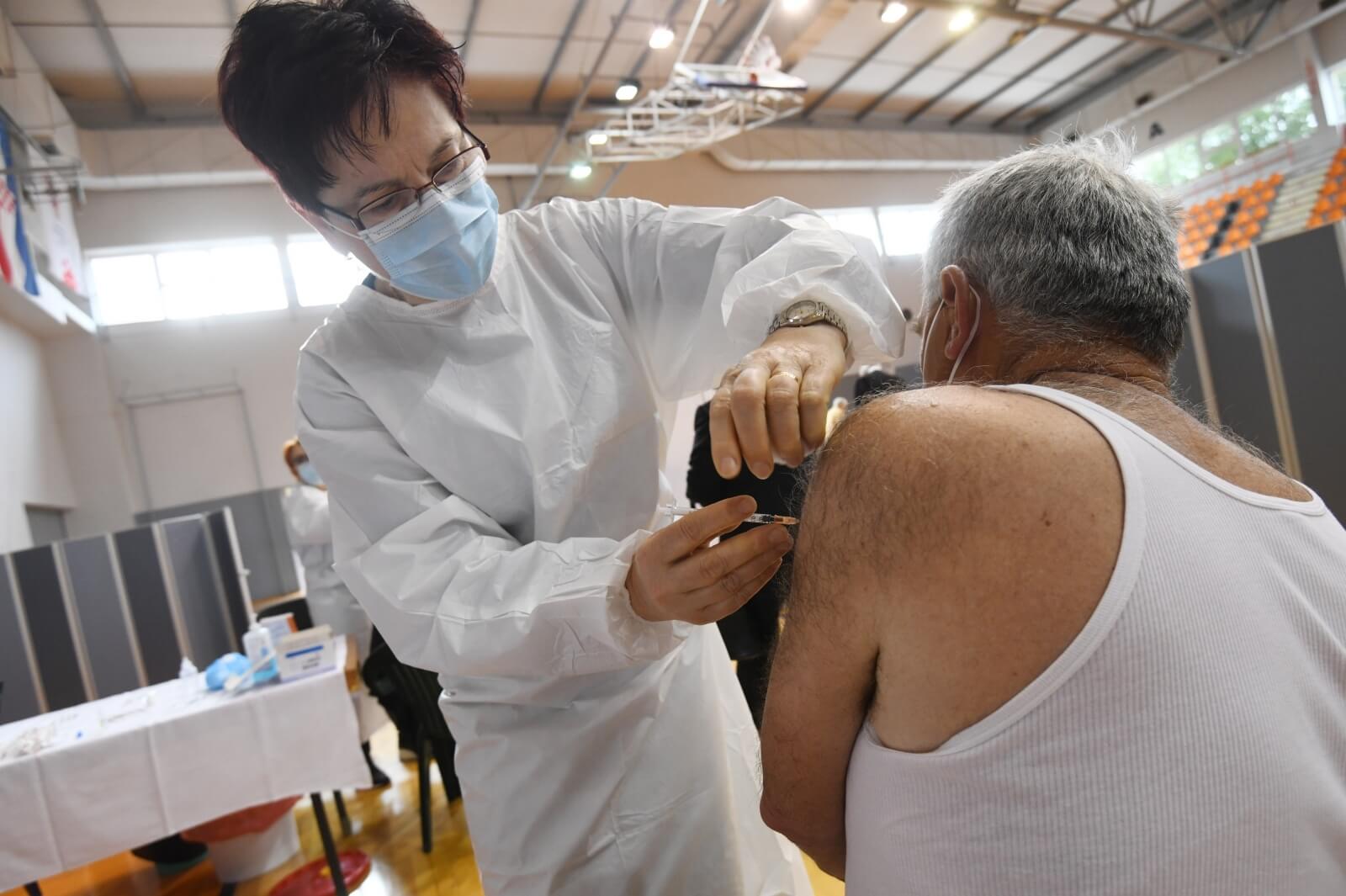
© Hrvoje Jelavic/ PIXSELL
Larger quantities of vaccines came to Šibenik on Friday, allowing vaccination in Baldeki Sports Hall to go without problems for the second day in the row. The vaccination attracts a number of citizens, so the area got quite crowded.
Highlights of the Week: Recycling yard in Zagreb on fire, reasons unclear
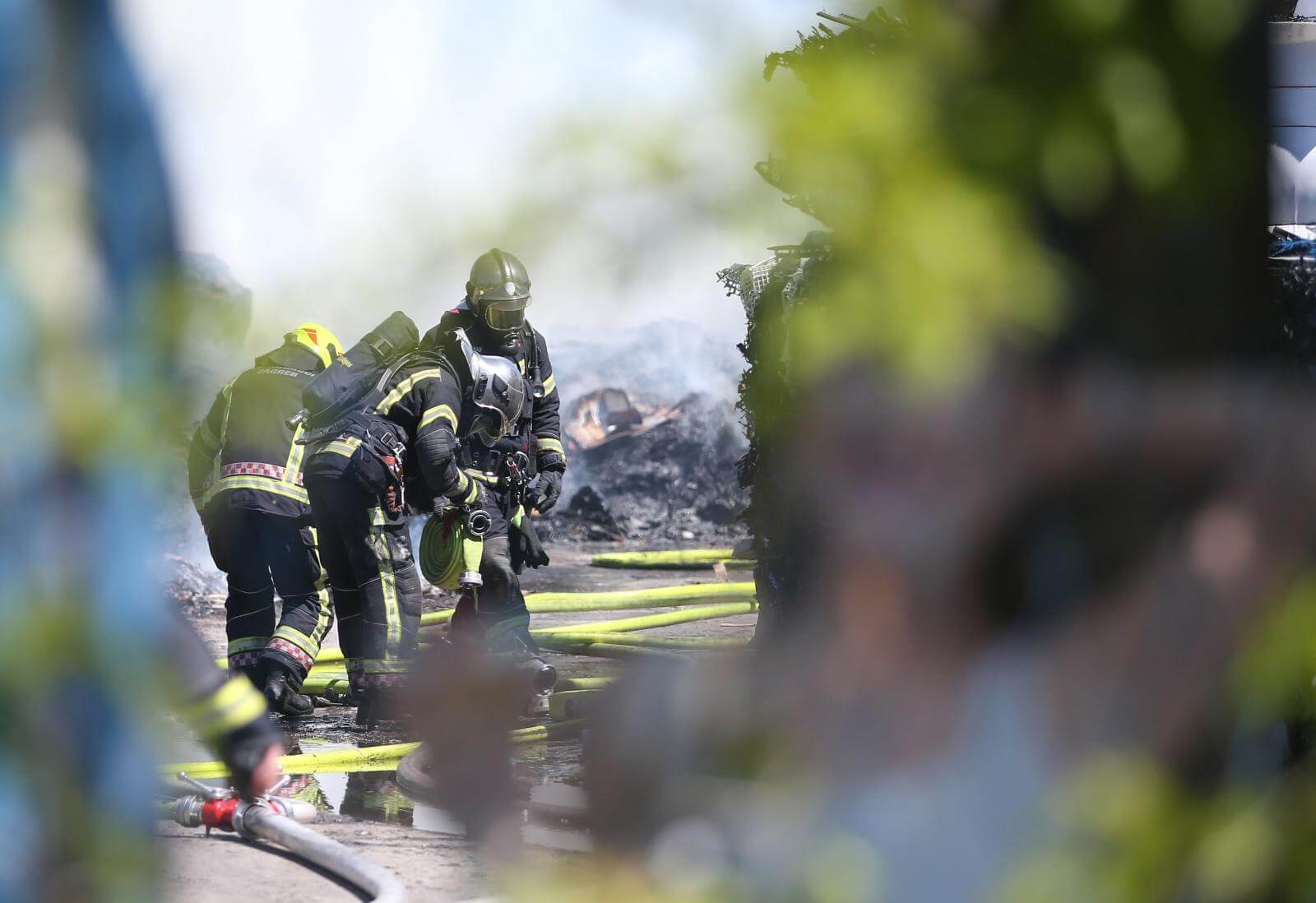
© Matija Habljak/ PIXSELL
Zagreb's recycling yard, located on Sarajevska Cesta in Novi Zagreb, was victimized by fire but quickly localized and put under control on Tuesday. The fire caught four containers, and 21 firefighters with six fire trucks rushed to the field. Police investigated the cause of the fire, but the reason is, for the moment, unknown. Firefighters managed to operate despite the lack of hydrants, and the thick white smoke was noticed by citizens who live in the buildings close to the yard, reported Večernji List.
To learn more about Croatia, have a look at our newly launched TC website.
For more about news in Croatia, follow TCN's dedicated page.
Brijuni Islands National Park: Tito's Former Summer Residence Gets Upgrade
The Brijuni islands, once the private summer residence for Josip Broz Tito, longtime president of former Yugoslavia, is getting a long-awaited renovation. A new catamaran will allow access to both islands for the first time and dormitories are being updated for education and research projects.
According to Barbara Ban/Novac/Jutarnji List on December 29,2019; Tito’s legendary cinema is also getting a facelift and tourist facilities are undergoing upgrades. Those upgrades include a new information center and an updated Natural History Exhibition. Trains will allow tourists with disabilities to see all of Veliki Brijun, the larger of the two islands.
Recently, a contract to build an aluminum catamaran for the Brijuni islands was signed at Tehnomont Shipyard in Pula. It is a 15.5 million HRK (2.1 million EUR) investment, and this ship will be able to transport visitors to Mali Brijun, the smaller of the two islands, for the first time. Sveti Nikola Bay on Mali Brijun has a jetty dating back to the Austro-Hungarian Empire, which was so shallow that the previous excursion boat couldn’t dock there. Therefore, Mali Brijun has been largely neglected, since visitors could only reach it as part of an organized group and smaller boat. On Mali Brijun they could see a performance at the Ulysses Theater. This will be now be possible on a regular basis, and the ship should be finished in 18 months, which means that the Brijuni islands will offer more tourism opportunities when the 2021 season begins.
Ulysses Theater on Mali Brijun
Biggest Brijuni Islands Investment in Over a Decade
But this is only a part of a larger plan, and the largest investment on the Brijuni islands in the last decade, and beyond. It’s worth pointing out that billions are not involved, considering that big numbers are often mentioned when it comes to investing in these interesting islands. Recall that not long ago there was a plan to completely renovate the hotels and villas and add facilities and accommodations. It would have been a 250 million EUR investment, and the names of well-known worldwide luxury chains were being mentioned to run these hotels and attract the elite back to the islands, as they had done back in the 1920s and 1930s. Very little remains of that elite past and the islands still await the government’s next move. But governments and ministers with big plans have changed as the years have passed. Now the future of the Brijuni islands is no longer on hold.
In any case, opportunities to finance projects are being taken advantage of wherever they arise, and one of those is the Novo ruho Brijuna (New Brijuni Outfit) project which is worth 41 million HRK (5.5 million EUR). This project is being funded by the European Regional Development Fund. Ten percent of the funding is coming from the Environmental and Energy Efficiency Fund, and the rest from public institutions. This is a small sum when compared to more ambitious investment proposals, but it is noteworthy and will provide more tourism opportunities for the only national park on the Istrian peninsula. Finally, Mali Brijun will be available to a wider group of visitors, and that’s where the largest construction project is being planned.
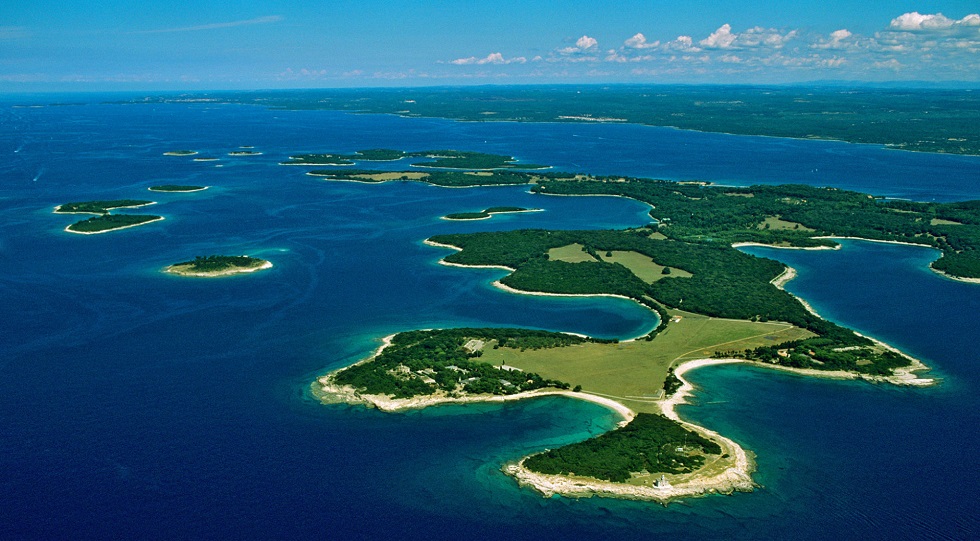
Dormitories Renovated for Research and Education
“We plan to renovate seven facilities next year. These are former military dormitories at Sveti Nikola Bay. They will be updated and returned to their original use. The dormitories won’t house the military, but are intended for nature schools, for scientists, divers, researchers and even artists. Therefore, the purpose of these dormitories is to serve these groups who conduct their summer activities at the island. The updated dormitories will have about 70 rooms with bunk beds. They will be simple buildings with sanitary facilities. Some rooms will have their own bathrooms, and some will be equipped with common bathrooms,” says Masa Mihelić, who runs this European project on Brijuni National Park, and hopes that after this project there will be many others which will increase the tourist capacity on the island.
She also points out that the kitchens will be arranged among the seven facilities to serve guests’ needs. One kitchen will be used at the information center and another will be for other facilities, such as laundry and storage. Mihelić emphasizes that these new accommodations in Brijuni are not intended for the typical commercial tourist who might otherwise visit Veliki Brijun.
“We are placing emphasis on the educational research and cultural importance of this project. Larger groups will always be accommodated here, so the facilities cannot be used for individual purposes,” she explains.
Most of these facilities are not being used now and are in rather poor condition. One facility currently has a janitor, and another stores firefighter equipment. These investments will make this section of the national park come back to life. However, although construction has already begun and was expected to be finished by the start of this season; it has not gone as smoothly as planned, unfortunately. The completion of project had to be extended to 2021, Mihelić points out.
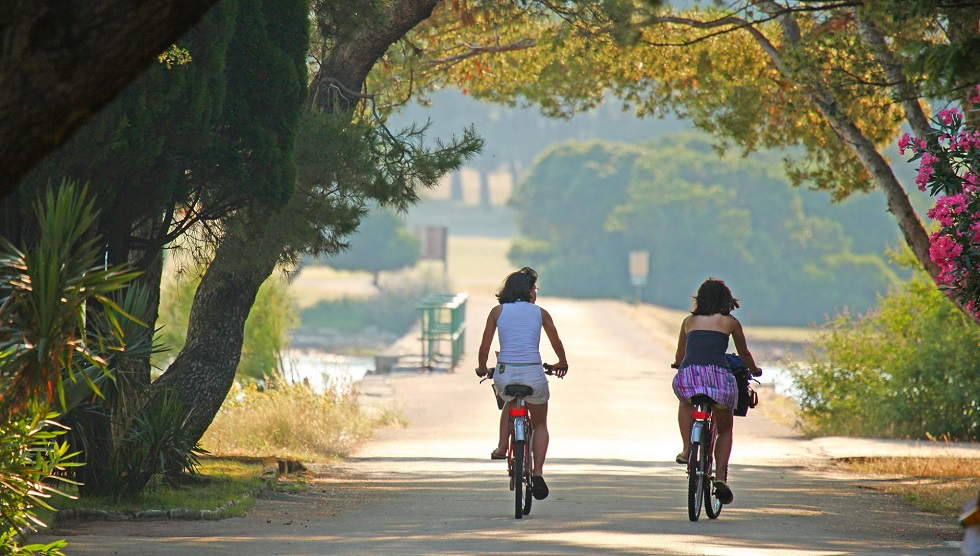
Mali Brijun Project Completion Postponed to 2021
“The project should have been completed by April 2020, but this will not be possible because of unforeseen circumstances. The pier on Mali Brijun collapsed and needed to be repaired. That became a multi-million EUR project, and our institution had to focus all its resources to address this issue. The rehabilitation of the facilities can begin only after this construction is completed,” Mihelić explains.
Their most significant accomplishment was choosing a contractor for the 150-passenger boat. One hundred of those seats will be inside the boat and accessible to people with disabilities.
New Catamaran Will Access Both Islands
“This boat will allow us to reach Veliki Brijun and Mali Brijun from Fažana. At the same time, the ship’s route will connect both islands. Then we will be able to organize a full day trip to Veliki and Mali Brijun. There will also be an option to go directly to Mali Brijun. Presently, it is only possible to visit that island as part of a special tour, but those had to be booked with advance notice and smaller groups. Special transport had to be used, which is why the trip was so expensive. This project will open the island to the general public and make the trip available to a wider audience,” points out Mihelić, who is the head of the largest EU project ever conducted on the Brijuni islands.
Veliki Brijun Renovation on Schedule
But no matter how far that project has fallen behind schedule, the rest of the renovation is being carried out according to plan. Therefore, by the end of this season, an information center had already been set up in Veliki Brijun, with an interactive screen presenting all the islands’ attractions. Two modern trains were purchased to transport tourists, and these allow people in wheelchairs to sightsee the island for the first time. The well-known Natural History Exhibition has been modernized and several new acquisitions are underway, as this is a complex project which will provide numerous new educational and tourist facilities. Tito's Summer Cinema will also get a new face.
Tito’s Cinema Gets Facelift
“It is a legendary cinema where Tito watched all the films which came to the Pula Film Festival, before their official screening. This space will be able to be used by cultural anthropologists when it is renovated and will feature long and short films on nature. So far, we have purchased 300 video clips from the archives of the former (Yugoslav) state in Belgrade which show the Brijuni islands from the 1950s to the 1980s. All of these films will be shown at the summer cinema,” the project manager points out.
Elizabeth Taylor and Richard Burton visit Tito on Brijuni Islands
And that's not everything. As part of the trip, the Brijuni islands will offer more than just a train ride and a visit to a safari park. That's why they are also designing 11 new attractions including promenades, stone stories, and educational trails.
For more information on tourist destinations and developments in Croatia, follow our Travel page. Check out the Brijuni Islands National Park website here, YouTube page here, and Instagram page here for more information and reservations.
2014 Best Croatian Promotional Film | Zagreb TourFilm Festival | Croatia
More than 10,000 Gather in Kumrovec for Tito's Birthday
ZAGREB, May 25, 2019 - More than 10,000 fans of former Yugoslav president Josip Broz Tito arrived in his birthplace of Kumrovec on Saturday to mark the Day of Youth and Joy, his official birthday, wearing Titovka caps, scarves, uniforms and T-shirts with his image, although this year there were far fewer flags with insignia of the former federation.
Although Josip Broz Tito Alliance president Jovan Vejnović said several buses were stopped at the Slovenian-Croatian border because some of those going to Kumrovec carried those insignia, the president of the SABA antifascist alliance, Franjo Habulin, said he had no information about the confiscation of flags or other items.
Vejnović said this year there were far more police monitoring the gathering than in recent years, and that "for the first time in 15, 16 years of this gathering," they called the participants to order.
Vejnović said he would like the message sent out from Kumrovec to be that people of good will gathered there for the Day of Youth and Joy celebration.
He said those who gathered there were concerned about developments on the territory of the former Yugoslavia and the creation of national tensions instead of a space for communication, agreement and cooperation.
Municipal head Robert Šplajt said the gathering in Kumrovec was something positive and that the town had the chance to revive its 1980s heyday.
Habulin said the gathering was focused on those with youthful and creative energy whom this country needed, adding that "it's necessary to create long term and stable economic conditions, a fiscal policy, a monetary-credit policy, to subordinate everything to the opening of new plants and to job creation so children will have somewhere to work."
Deputy county head Jasna Petek said the message from the gathering should be that Croatia was created on anti-fascism, as stated in the constitution, adding that Tito, by putting the Partisan movement on the side of anti-fascism in 1941, had built its foundations "into all the achievements we have today."
Former Croatian president Stjepan Mesić said he expected to see today "many flags under which the biggest victories in the history of our people were won, under which people were killed but also triumphed."
He said history could not be revised. "We have met here first and foremost because of the man who organised the National Liberation Struggle (NOB) and brought Yugoslavia and all its republics and provinces to the victors' table."
He added that there would have been no present-day Croatia without the NOB. "We welcomed victory at the victors' table and revisionists should understand that," he said, adding that Yugoslavia had been an authoritarian but not a totalitarian state.
Hundreds of people from the former Yugoslavia gathered at the House of Flowers, Tito's resting place in Belgrade, to honour him on May 25, his official birthday, bringing wreaths, flowers, and flags and insignia of the former Yugoslavia and the former League of Communists of Yugoslavia.
Despite controversies and disputes between historians and those who lived in Tito's time over his role in the post-WWII executions of members of the defeated armies and political opponents, modern history ranks him among the most prominent leaders and statesmen of his era.
Thousands of people from the former Yugoslavia visit the House of Flowers every year on May 4, his death anniversary, and on May 25, a public holiday in the former federation.
Tito is linked to the communist and Partisan movements and the antifascist struggle which, in WWII, was crucial for the establishment of the Yugoslav federation, and to the creation of the Non-Aligned Movement.
More than 200 heads of state or government and senior delegations from 127 countries attended his funeral in Belgrade on 8 May 1980. Since then, more than 17 million people have visited the House of Flowers. Annually, the most numerous are tourists from Western Europe and the US, and increasingly from China, Japan and South Korea.
More news about Tito can be found in the Politics section.
Tito’s Former House’s Site Turned into Retiree Gym
They used to come here under cover of night. In the house in what is today the Kerestinec Victims Street, the young couple lived in hiding for two years under false names. She was Marija Šarić and he was engineer Slavko Babić. In that short period of time, a child was also conceived. But, after the arrival of the Ustasha in Zagreb in May 1941, he went to Belgrade and left his pregnant partner behind. This is a story still often told by the old inhabitants on the Gajnice neighbourhood in western Zagreb. The main protagonists are actually Josip Broz Tito, the future president of Yugoslavia, and his third wife, Herta Haas. Hertha left the house to her son Mišo, whom she had with Tito, reports Večernji List on February 7, 2019.
Mayor Milan Bandić has decided that the very same house will now be the site of local self-government premises. That will be the result of an initiative launched ten years ago. At that time, according to Dejan Kljajić, the president of the City Neighbourhood of Podsused-Vrapče, the City of Zagreb allowed them to use the so-called Tito's House. In November 2016, the neighbourhood decided to open on its location the premises of the Gajnice Local Committee.
“Over the years, we have allocated 3.4 million kuna from the funds for small communal actions, and now the premises will be used by various associations, organisations, and we will also organise free fitness training for citizens of all ages, from children to retirees,” says Kljajić.
But the demolition of Tito’s house did not pass unnoticed. When the old house was almost completely demolished, members of the Anti-Fascist Association of Susedgrad complained, demanding that a memorial plaque with historical information should be placed on the new building. They sent an official request to the city neighbourhood, but the councillors unsurprisingly say they do not intend to set up the plaque. “The only plaque on the house will be the one with the address number and the name of the local committee,” says Kljajić.
The house was demolished after the neighbours had been complaining for years that nobody was taking care of it, so snakes appeared among the grass and the weed. The Susedgrad scouts’ organisation used the premises for a while, and the building and its surroundings were kept in good order during their period. A war veteran from Petrinja lived in the house for a while, but after he left, the maintenance problems began.
Mišo Broz gave up the house in 1979, provided that a memorial museum was built there about his father and the antifascist movement. After the project was not realised, he sued the City of Zagreb and sought to have the house returned to his possession, but the court rejected his request.
Translated from Večernji List (reported by Petra Balija).
More news about Tito can be found in the Politics section.
Tito's ''Galeb'' Will Cost More to Repair Than Planned
As Morski writes on the 5th of January, 2019, the complete overhaul of Tito's "Galeb" ship is undoubtedly the largest projects thought up by the mayor of Rijeka, Vojko Obersnel, in the past few years. Will his critics stop him? Unlikely, but the cost might.
For years, Rijeka's longtime mayor Vojko Obersnel has been subject to a lot of understandable criticism for his buying and desire to maintain Tito's "Galeb", which has cost more than a million kuna to date, but those protesting Obersnel's to completely repair Galeb would typically shut up when told that the overhaul of Tito's former vessel would be largely financed by European Union funds.
After the official acknowledgment that this is really true came, there were no longer any real obstacles to a tender for the job. Obersnel's critics have mostly remained quiet, even if temporarily, and even some of the furniture from the ship has been renovated.
At the beginning of 2019, more precisely on the 3rd of January, a public tender was concluded for Galeb's renovation, and although they hoped from the City of Rijeka that there might be at least a few bids, only one bid arrived wanting the job of bringing Tito's ship back to life.
The City of Rijeka's administration were likely finding it difficult to come across at least one shipyard ready to take up this truly demanding job, the cost of which is estimated at approximately 27.6 million kuna. As the Fiuman.hr portal exclusively reports from a well-informed source, the only offer came from the Viktor Lenac shipyard, but they have set the cost of the forecast twice as high as initially expected. If their offer is accepted, it will cost about 60 million kuna to breathe new life back into Tito's Galeb.
The City of Rijeka now has two options in this situation. One of them is to secure the remaining 32 million kuna from their own sources, and the only realistic possibility for it is to take out a new loan, which must be approved by the City Council of the City of Rijeka, where Obersnel has, at least officially, no actual majority.
It's no secret that the City of Rijeka has been living on credit for years now, and at this moment, owing primarily to poor management of the city's budget, this amounts to as much as 277 million kuna. To briefly recall, Maribor in Slovenia was also once the proud owner of the title of European Capital of Culture, and for this reason the city almost suffered bankruptcy, and many well-informed individuals are afraid that a similar path is currently being taken by Rijeka, especially if a loan is taken out solely for the purpose of bringing Tito's vessel into the 21st century.
Rijeka's second option is to cancel the tender entirely, and given the huge difference between the forecasts and actual costs of the ship's overhaul, the announcement of a new tender is not reasonable and it is questionable whether or not, should that be the case, Galeb's overhaul would be completed by the end of 2020 as the current deadline is quite stretched.
Make sure to stay up to date by following our dedicated lifestyle page for much more.
Click here for the original article by Zoran Zdelar for Fiuman.hr
Croatian Coat of Arms Slips From Frame, Reveals Image of Tito
History has a weird way of showing up again, framed or otherwise.
Tito’s Croatian-Produced Yacht “Jadranka” to Be Demolished?
It used to be a luxury yacht, but decades spent in a port in Montenegro have left their mark.


